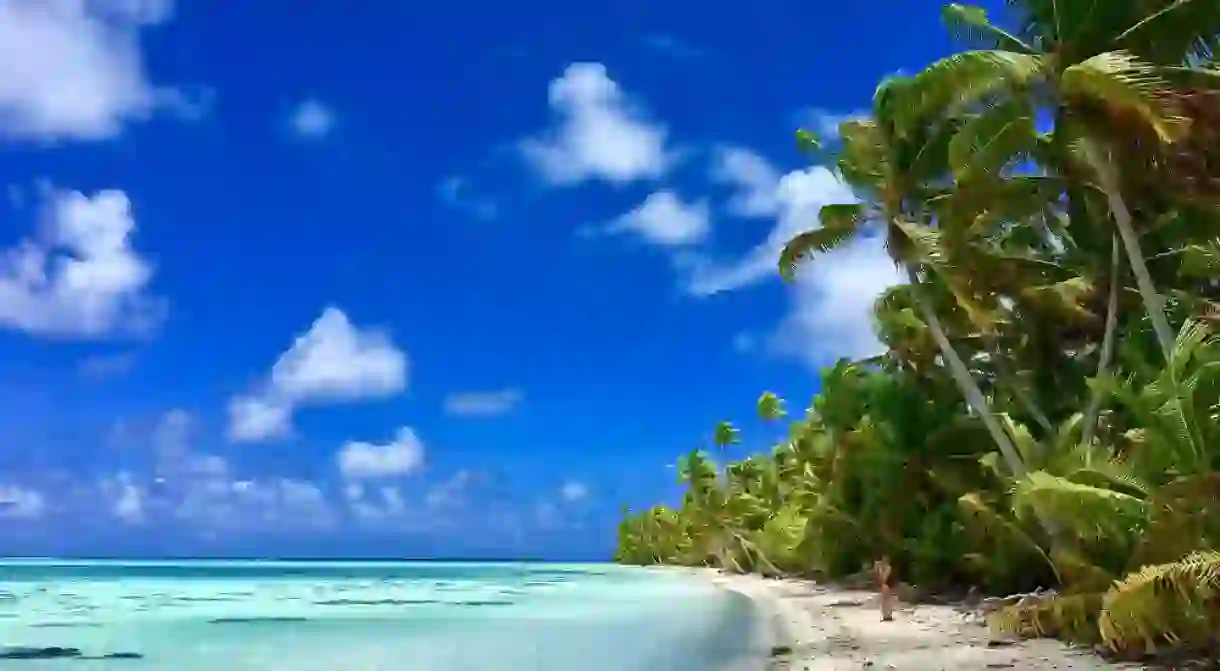12 Things You Didn't Know About French Polynesia

French Polynesia might seem like the promised land, with sparkling lagoons and spectacular pinnacles, but there’s a lot more than meets the eye. For example, what’s the difference between Tahiti and French Polynesia? How many islands make up this country? What kind of country is it, and what’s the connection to the French Government? Here’s what you probably don’t know.
It’s made up of 118 islands and 5 archipelagos
Although we commonly refer to the entire group of islands as Tahiti, it’s actually only one of the many islands that make up French Polynesia. Tahiti is divided into Tahiti Nui and the smaller south-eastern portion, Tahiti Iti. Home to nearly 70% of French Polynesia’s population, the island is part of a group of archipelagos referred to as the Society Islands. Famous islands, such as Bora Bora and Moorea, are part of French Polynesia, but not Tahiti.

There are 13 letters in the Tahitian alphabet
The Tahitian alphabet has all of the same vowels as the Latin alphabet—a, e, i, o and u—but only eight consonants—f, h, m, n, p, r, t and v. The Tahitian language was purely oral until the early 19th century. You might be wondering how “Bora Bora” got its name without a letter b? It’s actually pronounced “Pora Pora,” but it’s likely that early visitors misheard it, and it’s been Bora Bora ever since.
The overwater bungalow was created in French Polynesia
These islands really are home of the overwater bungalow. The first was created in the ’60s on the island of Moorea.

Tahitian letterboxes are actually for bread deliveries
Those letterboxes outside some homes? They’re not for letters—they’re for bread! There is no residential mail delivery, so residents have to go to the post office to collect their mail.
French Polynesia is home to the most photographed isle in the South Pacific
A short distance from Bora Bora lies Motu Tapu, which is said to be the most photographed isle in the South Pacific. Surrounded by pristine white sands and a turquoise lagoon, it was once a private retreat for the Polynesian Queen Pomare IV.
The word “tattoo” comes from Tahiti
The word originates from the Tahitian word tatau. It’s thought to date back as far as 1500 BC. Tattoos have been an integral part of Tahitian society and wider ancient Polynesian history and were often symbols of rank, wealth, tribe or family group.

It’s home to the world’s only coral atoll vineyard
Who would have thought you could grow grapes on a coral atoll? The French, of course! Vin Du Tahiti by the Domaine Dominique Auroy Winery is on the island of Rangiroa, a coral atoll in the Tuamotu Archipelago. It’s French Polynesia’s only wine label.
There are no poisonous snakes
Fact: there are no poisonous snakes in French Polynesia, or poisonous insects, either. You might get a few mozzies or sand flies, but none of these creatures are out to kill you.

There’s a strong Chinese history
French Polynesia’s Chinese population recently celebrated 150 years on the islands. About 300 Chinese arrived from Hong Kong in 1865 to work in the cotton fields and on coffee and sugar plantations. Today, about 12% of the population in French Polynesia is Chinese.
The Tiare Apetahi flower only grows on one island
This fragrant white blossom is commonly worn behind the ear by both men and women and is somewhat of a mystery. The Tiare Apetahi only grows on the island of Raiatea on Mount Temehani. No one has ever successfully replanted it anywhere else in the world.

French Polynesia is an overseas country of France
The islands were originally their own kingdom with royalty until its annexation by France in 1880. It’s now considered a semi-autonomous territory of France, though France’s authority includes such issues as law enforcement, property and civic rights.
There’s a Catholic Church made out of coral
The island of Fakarava is a protected coral atoll and has the second largest lagoon in the Tuamotu archipelago. It’s also home to one of the oldest Catholic churches in Polynesia, Jean de la Croix. The church interior is made completely out of coral.













